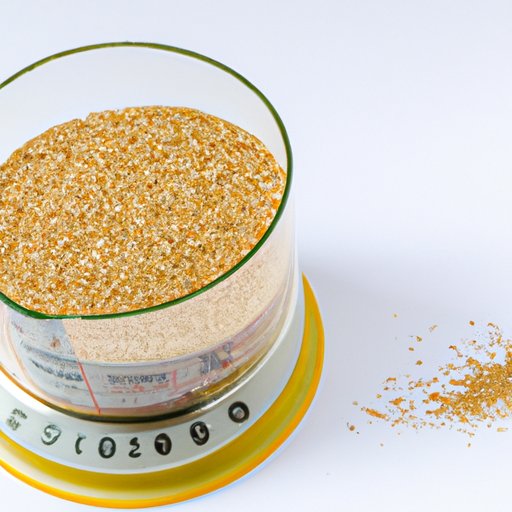Introduction
Converting grams to ounces and vice versa can be a daunting task, especially for those who are not familiar with the metric and imperial units of measurement. However, precise measurement is essential when it comes to cooking and baking. Getting the measurements wrong can lead to disastrous results, from undercooked or overcooked food to soupy or dry desserts.
The Metric and Imperial Units of Measurement
The metric system is the most widely used measurement system in the world. It is a decimal-based system that uses units such as grams, meters, and liters. On the other hand, the imperial system is used primarily in the United States and uses units such as ounces, pounds, and inches. In cooking and baking, both systems are used, but the metric system is generally used for precise measurements while the imperial system is used for rough estimates.
Why Knowing How Many Grams Make an Ounce is Crucial in the Kitchen
Recipes can use either grams or ounces as their unit of measurement, depending on the country of origin or the preference of the recipe developer. Grams are generally used in European recipes, while ounces are used in American recipes. Knowing how to convert between the two units is crucial when it comes to international recipes or when substituting ingredients that are not available in your local supermarket.
Simple Grams to Ounces Conversions
Here are some common conversions for some of the most frequently used ingredients in the kitchen:
- 1 ounce (oz) = 28.35 grams (g)
- 1 gram (g) = 0.035274 ounces (oz)
- 1 pound (lb) = 16 ounces (oz) = 453.59 grams (g)
- 1 kilogram (kg) = 2.20462 pounds (lb) = 35.27 ounces (oz)
While these conversions may seem intimidating, there are many online calculators and smartphone apps that make conversions a breeze. Some popular apps include Kitchen Calculator PRO, Unit Converter, and Convert Any Unit – Free Easy Unit Converter.
A Quick and Easy Guide for Precise Measurements
When measuring dry ingredients such as flour or sugar, it’s best to use a kitchen scale for precise measurements. This is because the weight of these ingredients can vary depending on how they are packed in the measuring cup.
When using a kitchen scale, place a clean bowl on the scale and press the tare button to reset the scale to zero. Add the ingredient, and the scale will display its weight. This method ensures that you are measuring the correct amount of each ingredient, leading to more accurate results.
For liquid ingredients, use a measuring cup or fluid ounces. Fill the measuring cup to the desired level, making sure the meniscus (the curved surface of the liquid) is level with the measurement line on the cup.
Understanding How Many Grams Make an Ounce: A Handy Conversion Chart
For those who prefer a physical reference guide, here is a handy conversion chart you can print out and hang in your kitchen:

Converting Grams to Ounces: The Simple Math Behind the Most Common Kitchen Measurements
The math behind converting grams to ounces (or vice versa) is simple. All you need to do is multiply or divide by a conversion factor. The conversion factor between grams and ounces is 28.35. To convert grams to ounces, divide the number of grams by 28.35. To convert ounces to grams, multiply the number of ounces by 28.35.
Below are more examples of common measurements and their equivalent in grams and ounces:
- 1 tablespoon (tbsp) = 15 grams (g) = 0.53 ounces (oz)
- 1 teaspoon (tsp) = 5 grams (g) = 0.18 ounces (oz)
- 1 cup (c) = 225 grams (g) = 7.94 ounces (oz)
Conclusion
Accurate measurement is crucial when it comes to cooking and baking. Knowing how many grams make an ounce is essential for precise measurement, especially when using international recipes or substituting ingredients. By understanding the conversions and using the right tools, anyone can become a master at accurate measurement in the kitchen.
To become more familiar with these conversions, practice measuring ingredients and check your measurements against the conversion chart.
